Posted by JoeWillie
Originally Posted by JoeWillie
First, let me apologize in advance for the length of this post, and some of this I’ve already said in previous posts over the past year, but I always get a kick out of when younger guys who never saw Joe Namath play try and argue that he wasn’t that good to people who saw him play.
With all due respect, NYJUNC, I appreciate many of your posts, but with regards to Namath’s greatness, you haven’t got a clue.
Being one of the older guys on this board, I had the privilege of seeing Namath play.
The guy wasn’t a great quarterback in his prime, he was a phenomenal quarterback and had he been able to remain healthy and if the Jets weren’t so cheap as an organization in the early ’70’s, there’s no telling what Namath could have accomplished from a statistical perspective. Ask Vince Lombardi, Al Davis, John Madden, or Bill Walsh, all great football minds who coached great quarterbacks themselves and all of whom were absolutely “awedâ€? by Joe Namath, “the player”, not Joe Namath, “the character”..
That said, it’s amazing to me how many people on many other boards bash Namath and the fact that he is in the HOF. They always site his stats as being sub HOF. I saw one thread that even compared him to Trent Dilfer for Chrissakes!
I coach HS football and you wouldn’t believe how many kids ask me if I think Namath should be in the Hall for the same reasons. I tell them that stats are overrated. I tell them it was a different game back then. And I also tell them that unless you saw Joe Namath play in his prime, you can never have an appreciation for his talent or his accomplishments on the field.
Here’s some important facts that you have to consider when you evaluate Namath as a great quarterback:
o Namath was one of the few real “Field Generalsâ€? in the history of the game. Preparing a game plan and calling plays is now a separate full-time job in the NFL (Offensive Coordinator). Back in the 60’s, those responsibilities usually sat with the head coach for most teams. They usually called the plays. In the case of the Jets, that responsibility rested with their quarterback. It was Namath who called the plays, along with the additional responsibility of executing the plays themselves. His ability to read defenses was “ahead of his timeâ€? for most quarterbacks, and in fact, over his first 9 seasons with the Jets, Namath called 80% of the offensive plays at the line of scrimmage. That was rare, even back then. It certainly doesn’t happen today, as quarterbacks are told what to run, and usually have one “calledâ€? option off the called play. This allows them to focus specifically on executing the play, and not be “burdened” with having to think too much. Namath was the offensive coordinator “on the fieldâ€? and excelled with this added responsibility. Even many QB’s of his time (Dawson, Staubach, Bradshaw) were not trusted with that responsibility.
o Vince Lomdardi called him the most gifted passer he ever saw and told many people within his circle that he would have loved to coach him.
o Bill Walsh called Namath the most beautiful, accurate, stylish passer with the quickest release he’s ever seen.
o John Madden said that Namath was the only opposing QB he ever feared as a coach, and that when the Raiders played the Jets, the entire defensive game plan revolved around stopping Namath and Namath only. Madden also called him one of the most courageous PLAYERS he’s ever seen.
o Al Davis was awed by Namath’s talent. Said the “sucker plays like he’s always going down hill”.
o Don Shula said Namath had the quickest release of any quarterback who’s ever played and also called him one of the top 3 smartest quarterbacks of all-time. Basically said it was Namath’s ability to read defenses and his quick release that was the single biggest factor in the Jets win over the Colts in SB III.
o Bear Bryant called Namath the “the greatest athlete he ever coached”.
o Contemporaries like Terry Bradshaw, Jim Kelly, Vinny Testaverde, and Joe Montana all say their boyhood idol was Joe Namath.
o First of all, as many people have already stated in this thread, Namath played in a period where it was much more difficult to throw the ball. Pass defense rules for defensive backs back in the 60’s and 70’s were much more in favor of the defense than it is now. You could basically “mugâ€? receivers all the way down the field as long as the ball wasn’t in the air.
o There were no rules preventing QB’s from being hit, which helped contribute to some of Namath’s injury woes. He was a “marked manâ€? in those days, while QB’s today can pretty much stand back there all day without fear of being “lit upâ€?.
o There were no domes or turf fields in those days, so games were played under much more adverse conditions. Bear in mind that Namath played in one of the worst stadiums in the league for his entire career. Shea Stadium holds some great memories for Jet fans, but for a QB, with it’s high winds, it was not a place conducive to passing the football. Giants Stadium, as bad as it is in December, is a picnic compared to what Shea was.
o There was no systematic short passing system like the West Coast offense when Namath played, so most of Namath’s attempts were of the “downfield variety”. In fact, Namath averaged about 14.6 yards per completion, which is one of the highest, if not the highest, in the history of the league. Check out this stat compared to other Namath contemporaries:
Namath – 14.6
Unitas – 14.2
Dawson – 13.9
Starr – 13.6
And a few other more modern guys …
Marino – 12.3
Manning – 12.0
Montana – 11.8
I’m not a big stat guy, but I’m just using this particular statistic to help illustrate how the passing game was different back then and why that style did open up quarterbacks of that era to more interceptions than the one’s that play today. In fact, if you go back and compare QB’s of that era to today’s QB’s and look at the TD/INT ratios of both, you’ll notice that the quarterbacks of the 60’s and 70’s threw more interceptions in general, mostly due to some of what I describe above.
o Injuries: Keep in mind that Namath played for the entire second half of his career on two of the worst legs ever and because of the Jet’s cheapness in the early 70’s, on some of the worst teams ever. I’m not talking bad teams, I’m talking terrible teams, whose only real offensive threat was Namath. When you found yourself down 3 touchdowns at the half, as the Jets frequently did back in those days, it’s alot easier to play pass defense when the other team is forced to pass the ball on every down in order to play “catch upâ€?, especially against a QB who can’t move.
o Lastly, keep in mind that Namath played his ENTIRE career without a great running back at his disposal. Now Matt Snell and Emerson Boozer were good players, but let’s face it, you’d be hardpressed to find fans outside of NY that have even heard of these guys. They were not GREAT players, they were very good players. Roger Staubach had Tony Dorsett, Tony Hill, and Drew Pearson. Terry Bradshaw had Franco Harris, Lynn Swann, John Stallworth, Mike Webster, and a defense full of HOF’ers. Joe Montana had Roger Craig, Jerry Rice and John Taylor. Even Peyton Manning, in his most prolific seasons, had Edgerrin James along with Marvin Harrison and Reggie Wayne. Namath had 1 HOF receiver (Maynard) for about 6 full seasons and that’s it.
To summarize, here’s the bottom line …
Like I said earlier, I think it’s really difficult to appreciate what kind of player Joe Namath was and what he meant to football if you didn’t live through that period and actually get to see him play.
Joe Namath was the first real “superstar” of the NFL. He was an unbelievable talent and character who changed how the QB position is played forever, changed how athletes are looked upon in society, opening doors for athletes that were previously closed, and helped shape today’s NFL.
As far as Joe Namath, “the playerâ€?, goes, I’ll say this. Did he have a “greatâ€? career statistically? Absolutely not, which is why it’s tough for people like NYJUNC, who never saw him play, to find an appreciation for him in the record books. He obviously did not have the entire career, statistically, that guys like Tarkenton, Bradshaw or Staubach did. But that doesn’t mean those guys were better quarterbacks or were even better in their prime. They weren’t. They did play on better teams for a longer period of time. You can’t rely solely on numbers. Jake Plummer threw for more yards then Namath, but I don’t think anybody in their right mind would ever say he was a better quarterback than Joe Namath … certainly nobody that ever saw Joe Namath play. And ask a Giants fan in the early 70’s who they’d rather have at QB, Joe Namath or Fran Tarkenton. I can tell you what many of them said back then.
The fact is that Namath’s career numbers were decimated by many factors … specifically, injuries, bad teams, and deplorable conditions.
But, in his prime, over a period of about 5 seasons, he was by all counts, without a doubt, the most prolific, exciting player in the history of the game up until that point. He was a “comet� in sports terms, a player with ability that comes along once every 20 years, who revolutionalized the quarterback position and influenced an entire generation of future players of that particular position. At his peak, he was as good as anybody who has ever played the game.
That’s why he’s in the Hall of Fame and that’s why, to this day, the NFL still reveres him as one of the most important players in history, regardless of any statistics.
And that’s also why, if I could take one QB in their prime for one game, Namath would be right at the top of that list.






